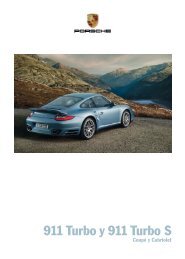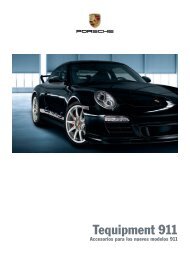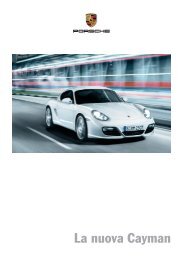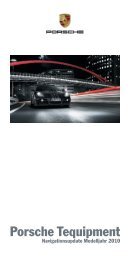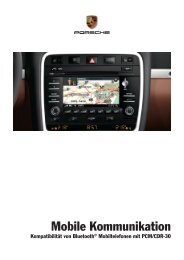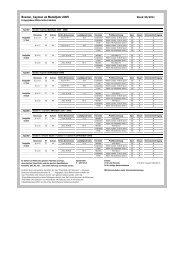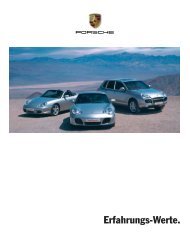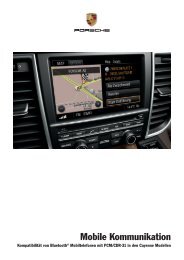Create successful ePaper yourself
Turn your PDF publications into a flip-book with our unique Google optimized e-Paper software.
Treadwear<br />
The treadwear grade is a comparative rating<br />
based on the wear rate of the tire when tested<br />
under controlled conditions on a specific<br />
government test course. For example, a tire<br />
graded 150 would wear one and a half (1-1/2)<br />
times as well on the government course as a tire<br />
graded 100. The relative performance of tires<br />
depends upon the actual conditions of their use,<br />
however, and may depart significantly from the<br />
norm due to variations in driving habits, service<br />
practices and differences in road characteristics<br />
and climate.<br />
Traction AA, A, B, C<br />
The traction grades, from highest to lowest, are<br />
AA, A, B, and C and they represent the tire's ability<br />
to stop on wet pavement as measured under<br />
controlled conditions on specified government<br />
test surfaces of asphalt and concrete. A tire<br />
marked C may have poor traction performance.<br />
Warning!<br />
The traction grade assigned to this is based<br />
on braking (straight-ahead) traction tests<br />
and does not include cornering (turned)<br />
traction, acceleration, hydroplaning or peak<br />
traction characteristics.<br />
Temperature A, B, C<br />
The temperature grades are A (the highest), B and<br />
C, representing the tire's resistance to the<br />
generation of heat and its ability to dissipate heat<br />
when tested under controlled conditions on a<br />
specified indoor laboratory test wheel.<br />
Sustained high temperatures can cause the<br />
material of the tire to degenerate and reduce tire<br />
life, and excessive temperature can lead to<br />
sudden tire failure.<br />
The grade C corresponds to a level of<br />
performance which all passenger car tires must<br />
meet under the Federal Motor Vehicle Safety<br />
Standard No. 109.<br />
Grades B and A represent higher levels of<br />
performance on the laboratory test wheel than the<br />
minimum required by law.<br />
Warning!<br />
The temperature grade for this tire is<br />
established for a tire that is properly inflated<br />
and not overloaded. Excessive speed,<br />
underinflation, or excessive loading, either<br />
separately or in combination, can cause heat<br />
buildup and possible tire failure, resulting<br />
loss of control, leading to serious personal<br />
injury or death.<br />
Tire pressures<br />
Danger!<br />
Risk of accident.<br />
Risk of serious personal injury or death.<br />
Driving the vehicle with low tire pressure<br />
increases risk of a tire failure and resulting<br />
loss of control. Furthermore, low tire<br />
pressure increases rate of wear of the<br />
affected tires and cause damage.<br />
f Always use an accurate tire pressure gage<br />
when checking inflation pressures.<br />
f Do not exceed the maximum tire pressure<br />
listed on the tire sidewall. (Also refer to<br />
”Technical data“).<br />
f Please see the chapter “TIRE PRESSURE<br />
PLATE” on page 283.<br />
f Cold tire inflation pressure means: all tires<br />
must be cold, ambient temperature maximum<br />
68 °F (20 °C), when adjusting the inflation<br />
pressure. Avoid sunlight striking the tires<br />
before measuring cold pressures, since the<br />
pressures would rise from temperature<br />
influence.<br />
Minor Repairs 281



